Commelina benghalensis
| Botanical Name | Commelina benghalensis |
|||||||||||
| Family | Commelinaceae - The Spiderwort family. |
|||||||||||
| Pronunciation | kom-uh-LEE-nuh ben-gal-EN-sis |
|||||||||||
| Common Name(s) |
English: Tropical Spiderwort; Benghal Dayflower; Benghal Wandering Jew; Blue Wandering Jew ; Venus's Bath; Wandering Jew
Afrikaans: Bengaalse Commilina; Bengaalse Wandelende Jood; Blouselblommetjie; Wandelende Jood
IsiXhosa: Uhlotshane
IsiZulu: Idambiso; Idangabane ; Idemadema; Idlebendlele
Sesotho: Khopo-e-nyenyane ; Khotswana
Tshivenda: Damba
IsiNdebele: Indabane
|
|||||||||||
| Plant Group |
|
|||||||||||
| Plant Size |
|
|||||||||||
| Position |
|
|||||||||||
| General Information |
|
|||||||||||
| Specific Information | Commelina benghalensis can be an annual or perennial herb, depending on climatic conditions: annual in temperate to sub-tropical zones and perennial in tropical climates. The leaves are smooth on both sides, lily-like in shape, 3 - 7 cm long and 2 - 4 cm wide. Stems can be erect to climbing if supported or creeping along the ground. A distinguishing feature is the presence of reddish (sometime white) hairs on the leaf sheath - this is reportedly the only Commelina with this feature. Commelina benghalensis is an aggressive plant that roots at almost every node as it creeps, creating a dense mat of growth on the soil surface which can smother other plants. A most fascinating feature is that it produces not only aerial (above ground) flowers, but also produces subterranean (underground) flowers, a somewhat unusual occurrence in the plant world. These underground flowers, which grow on burrowing stems, are white, very small and do not open. They do, however, produce seeds. (Images of these underground flowers can be seen here: http://www.invasive.org/weedcd/species/4551.htm) The ability to root from the nodes, produce seed both above and below ground and to take root from broken pieces of stem, combined with its capacity to thrive in a wide range of climatic conditions, have resulted in its being one of the most problematic weeds in 29 (and counting!) different countries. It is most troublesome in pastures and crop fields where it forms a dense cover that smothers low-growing plants such as vegetables, legumes, cotton and cereal crops. |
|||||||||||
| Ad Break | ||||||||||||
| Flowers | ||||||||||||
| Description | flower consists of two club-shaped spathes or bracts and one very small spathe below, with tiny yellow flowers in the center |
|||||||||||
| Season |
|
|||||||||||
| Colour |
|
|||||||||||
| Growth Rate |
|
|||||||||||
| Plant Uses |
|
|||||||||||
| Distribution and Habitat | native to all tropical and sub-tropical regions throughout Africa and Asia, and introduced to, amongst others, the U.S.A., the Hawaiian islands and Australia, in moist, sandy, loamy or rocky soils, on disturbed sites, forest edges, road sides, agricultural and cultivated sites, and home gardens |
|||||||||||
| Planting Suggestions | Although Commelina benghalensis makes a fast growing ground cover and can stabilise soil on banks and slopes, one must consider its invasive qualities. Once planted, it is extremely difficult to eradicate and is almost guaranteed to spread to other parts of the garden. It grows easily from stems settled shallowly onto the soil. |
|||||||||||
| Medicinal Uses | In South Africa, Commelina benghalensis is used for treating infertility in women. It is used in other parts of Africa and Asia as fodder for animals or food in times of scarcity, and medicinally for the treatment of sore feet, sore throat, burns, eye irritation, thrush in infants and stomach irritation. |
|||||||||||
| Ad Break | ||||||||||||


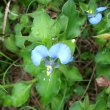
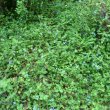
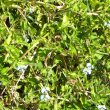
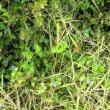
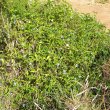
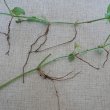
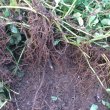
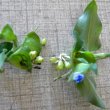


Comments
invasiveness of the Commelina africana
Lorraine, do you think that the Commelina africana which has a yellow flower is also as invasive and smothering as its purple sister discussed above?
Commelina africana
Hi Yvette
My sincere apologies for not having replied to your query.
The Commelina africana that grows wild in my veld is not at all invasive - in fact it is very straggly and the plants remain quite small. I tried growing it in the garden but it was not happy. It grew a little bigger than those in the veld, but remained straggly and flowered less.
Kind regards
Lorraine
Discuss this plant
Share knowledge, ask a question or give an experience.